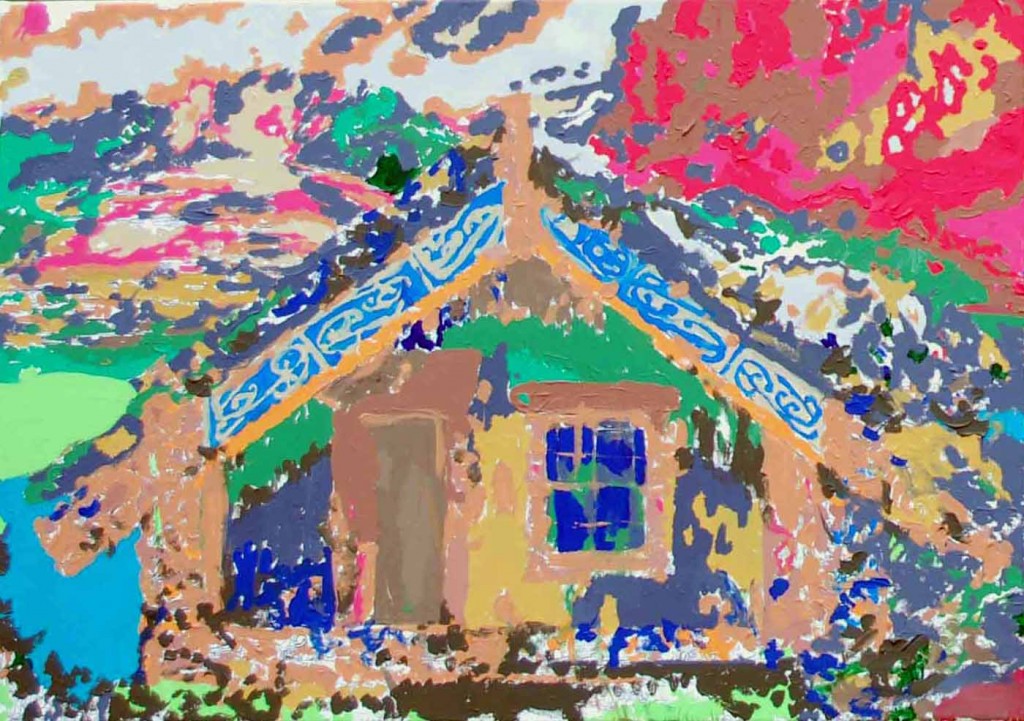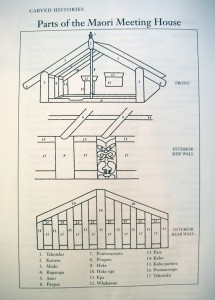072hin_100708_a pop-up performance space!
In front of the historic building is a pop-up performance space! That is to say, a high-tech carbon fibre structure that spring loads into a 100sqm temporary awning. This a tent-in-a-bag erectable by one woman!

072hin_100708_Paint By Numbers public workshop
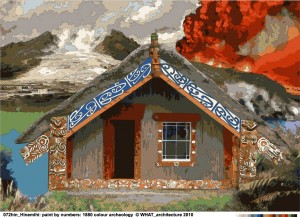 One big question in the UK lately is how to engage stakeholders in the design process? How can the public participate? Or does design by democracy result in an over-mediated diluted soup of opinion? WHAT_architecture launched ‘paint by numbers’ as a response to the UCL’s Department of Archeology’s research into the surface of an historic building. Paint by numbers is the history of colour on a particular building. Given that this building is a maori meeting house, a wharenui, a whare manaaki, a whare wanaanga, colour also throws up issues of race, culture and empire…
One big question in the UK lately is how to engage stakeholders in the design process? How can the public participate? Or does design by democracy result in an over-mediated diluted soup of opinion? WHAT_architecture launched ‘paint by numbers’ as a response to the UCL’s Department of Archeology’s research into the surface of an historic building. Paint by numbers is the history of colour on a particular building. Given that this building is a maori meeting house, a wharenui, a whare manaaki, a whare wanaanga, colour also throws up issues of race, culture and empire…
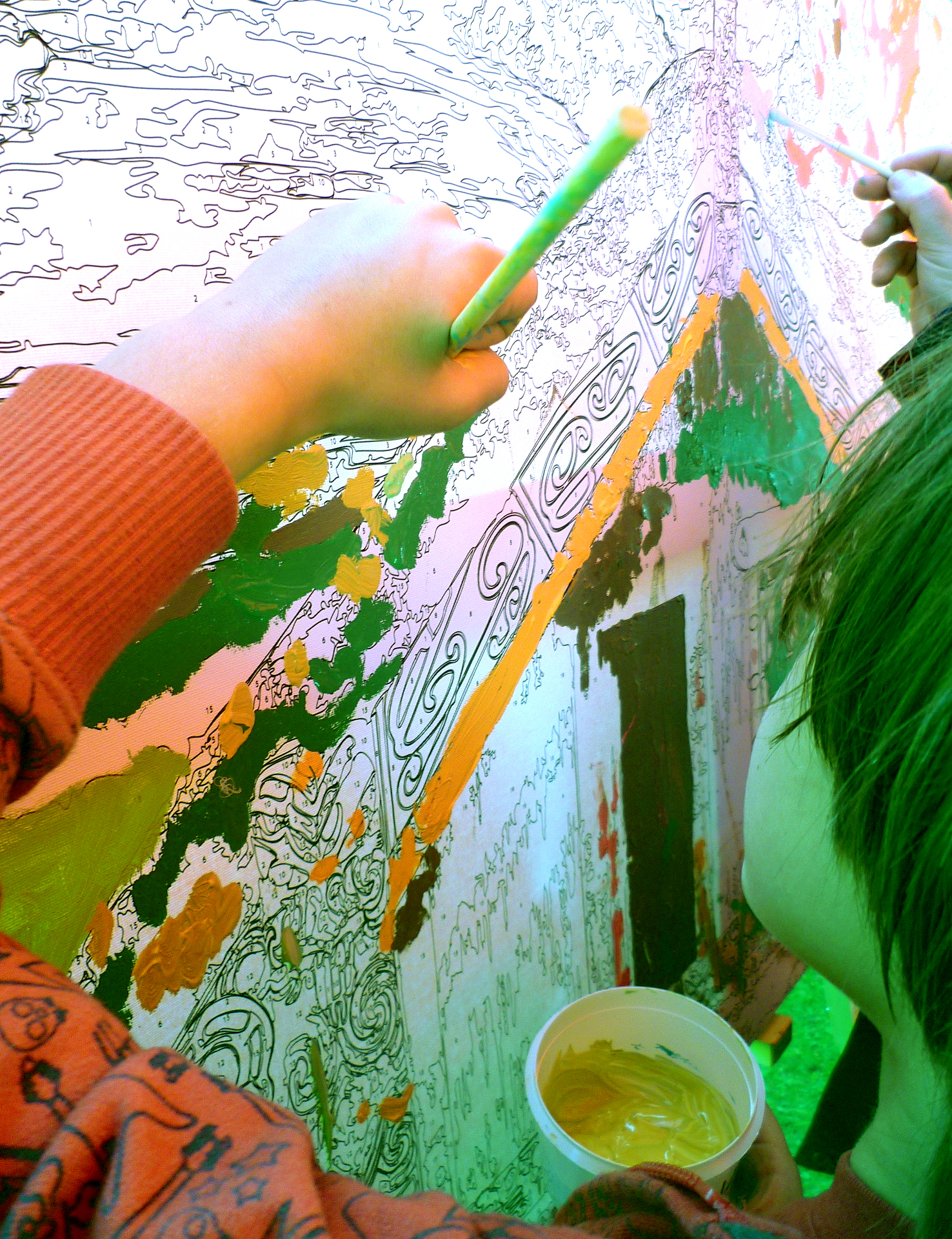
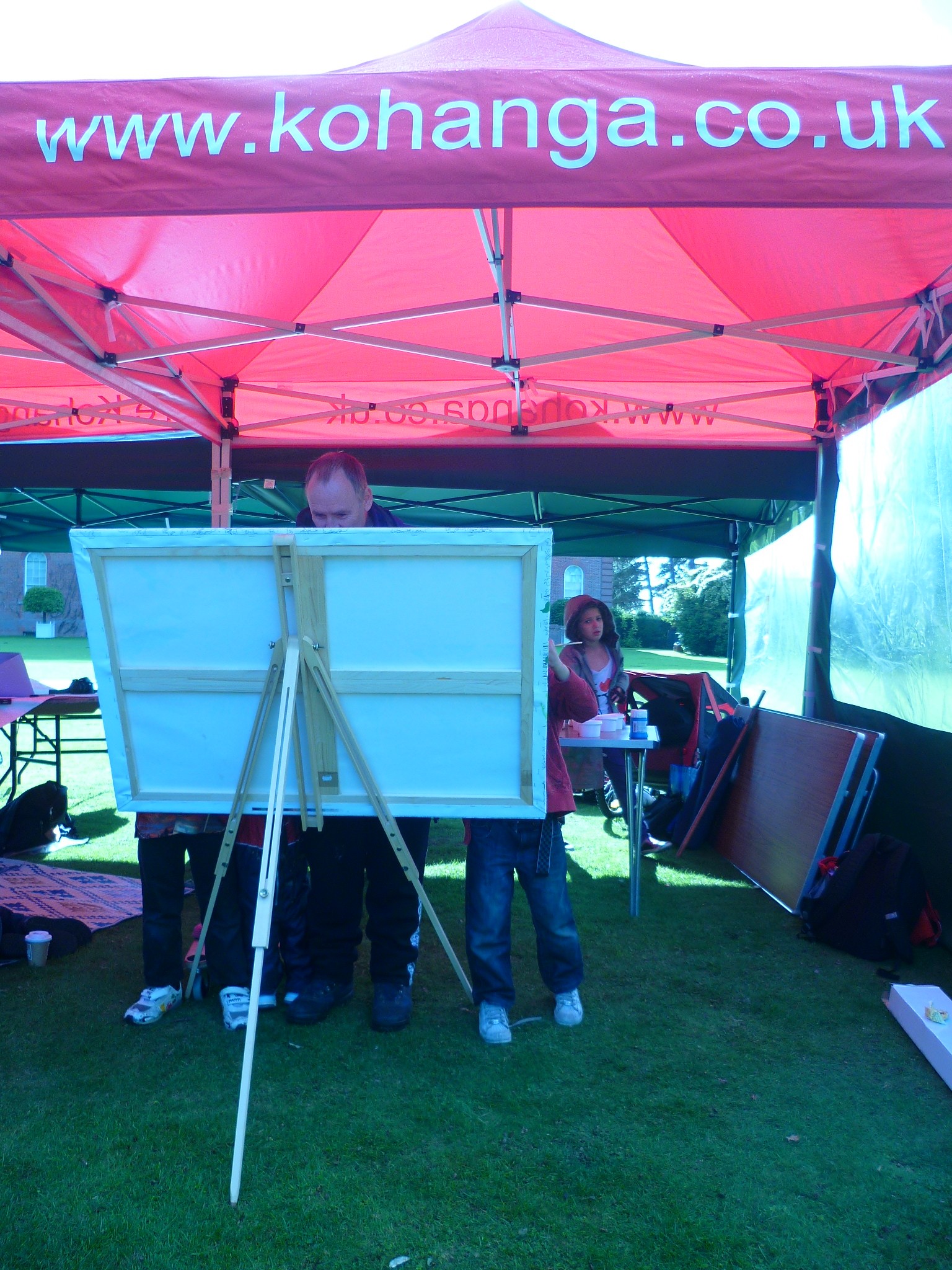

094cla_100708_The Playtree
Many parks have signage asking children ‘DO NOT PLAY ON TREES’. This project thus sought to give children an experience of tree climbing by making an artificial Play Tree that encouraged climbing. Constructed from a single Douglas Fir log, the tree itself is a feat of structural engineering due to the use of specific timber details drawn from lumberjack techniques.

069hil_Fire Appliance Test!
Kids love fire engines! None more so when testing the clearance for the local fire brigade’s appliance in passing through the school’s new entry.

072hin_100708_postcard: Greetings from Hinemihi!
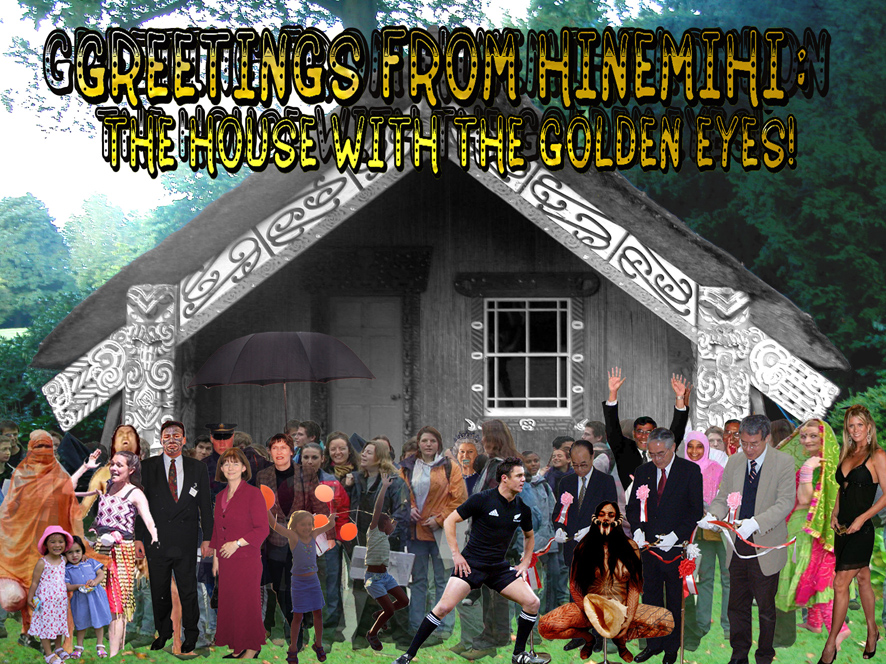 The meeting house Hinemihi o te Ao Tawhito (Hinemihi of the Old World) was built in 1881 and stood on the North Island in the village of Te Wairoa, a few kilometres from the Pink and White Terraces on the shores of Lake Rotomahana. On June 10 1886, Mount Tarawera erupted, destroying the village and killing 153 of its inhabitants. Hinemihi provided shelter to numerous people during the eruption and was one of the few buildings to survive. In 1892 the Governor of New Zealand, the fourth Earl of Onslow, dismantled and shipped Hinemihi to England with instructions for reassembly in Clandon Park, Surrey.
Finally a word about the all-embracing ‘Sargeant Pepper’s’ image of Hinemihi. She is not a house specifically for Maori. Whilst Hinemihi is of Maori origins, she grew up in England and is today a house for all… and a carrier of culture.
The meeting house Hinemihi o te Ao Tawhito (Hinemihi of the Old World) was built in 1881 and stood on the North Island in the village of Te Wairoa, a few kilometres from the Pink and White Terraces on the shores of Lake Rotomahana. On June 10 1886, Mount Tarawera erupted, destroying the village and killing 153 of its inhabitants. Hinemihi provided shelter to numerous people during the eruption and was one of the few buildings to survive. In 1892 the Governor of New Zealand, the fourth Earl of Onslow, dismantled and shipped Hinemihi to England with instructions for reassembly in Clandon Park, Surrey.
Finally a word about the all-embracing ‘Sargeant Pepper’s’ image of Hinemihi. She is not a house specifically for Maori. Whilst Hinemihi is of Maori origins, she grew up in England and is today a house for all… and a carrier of culture.
